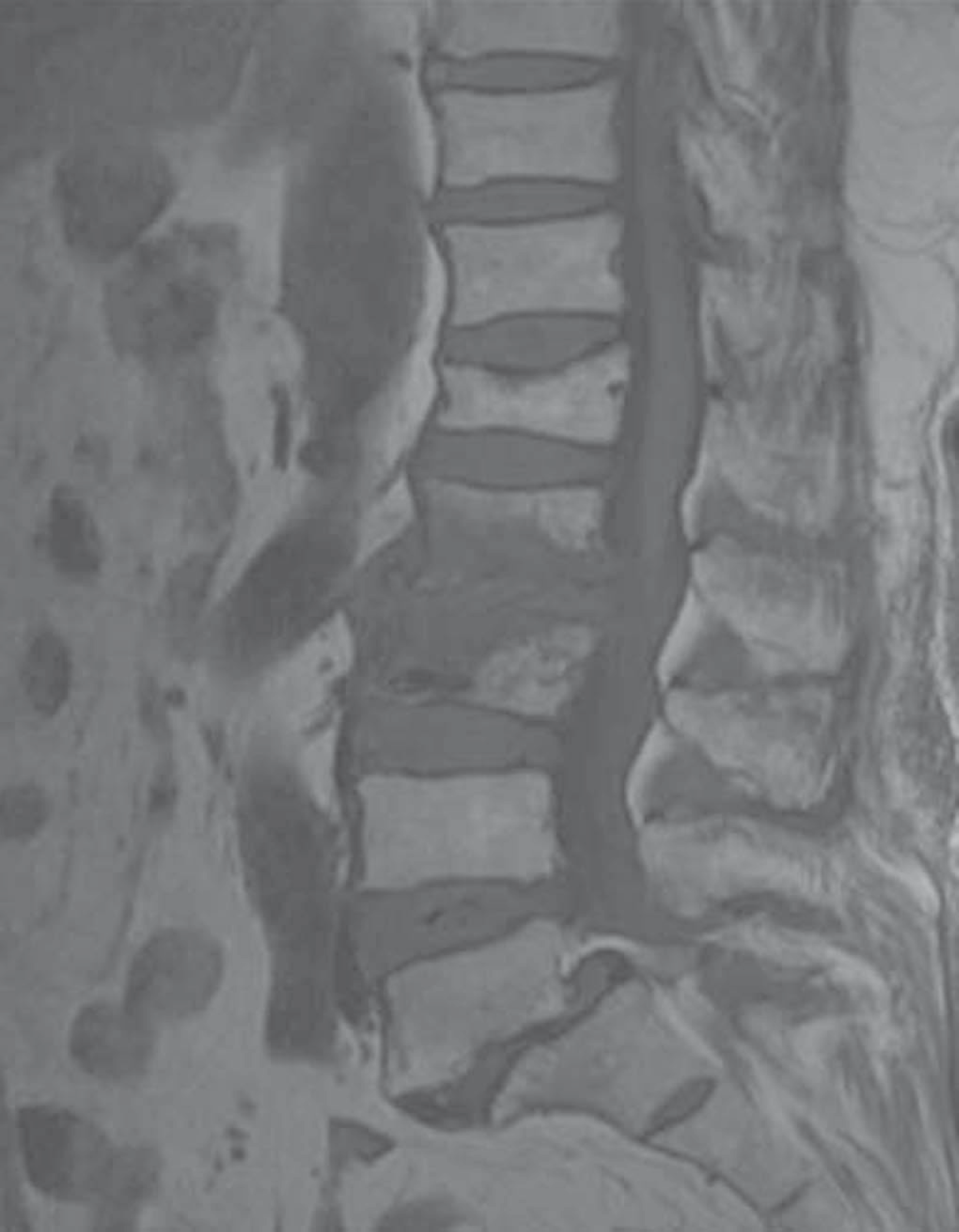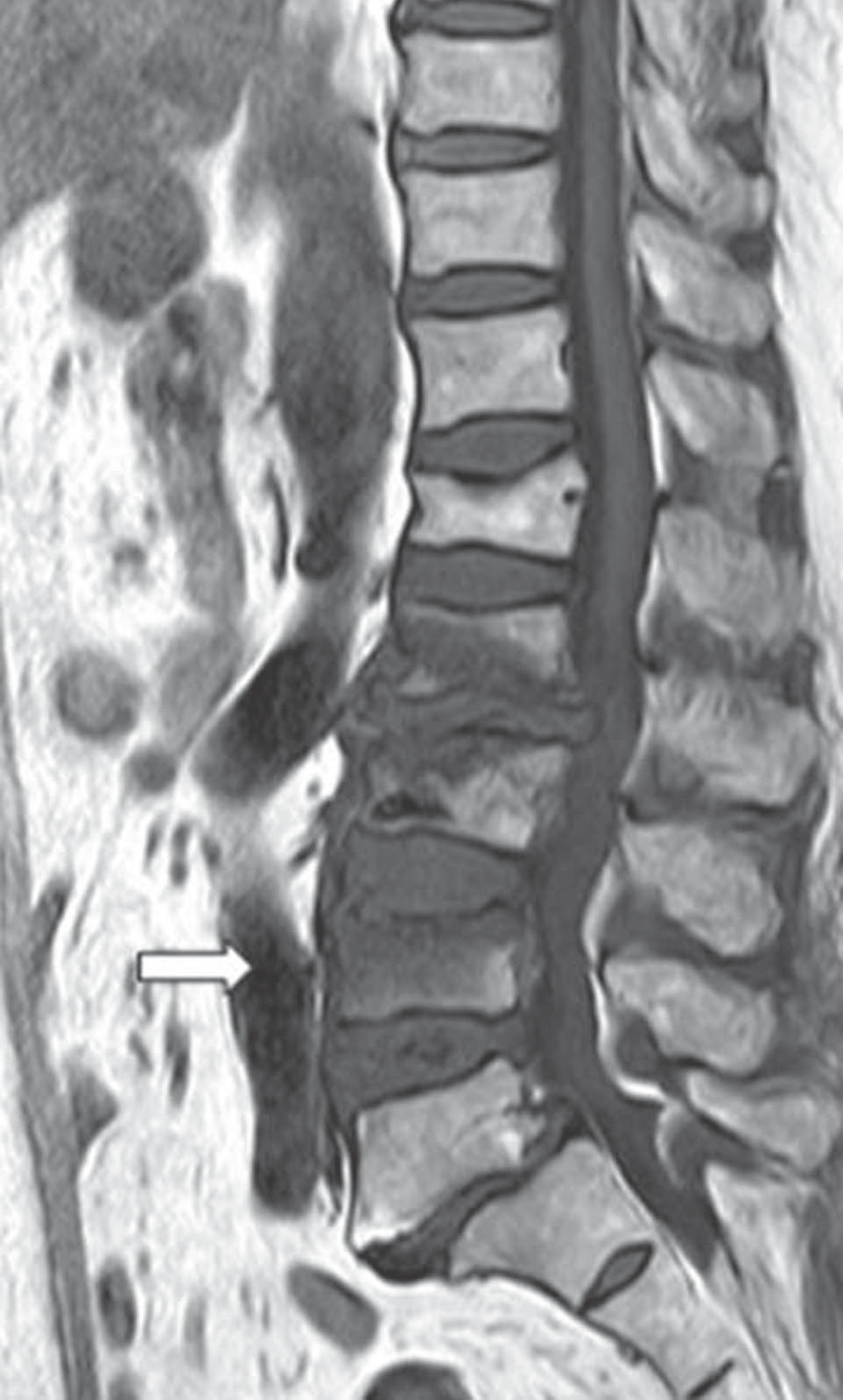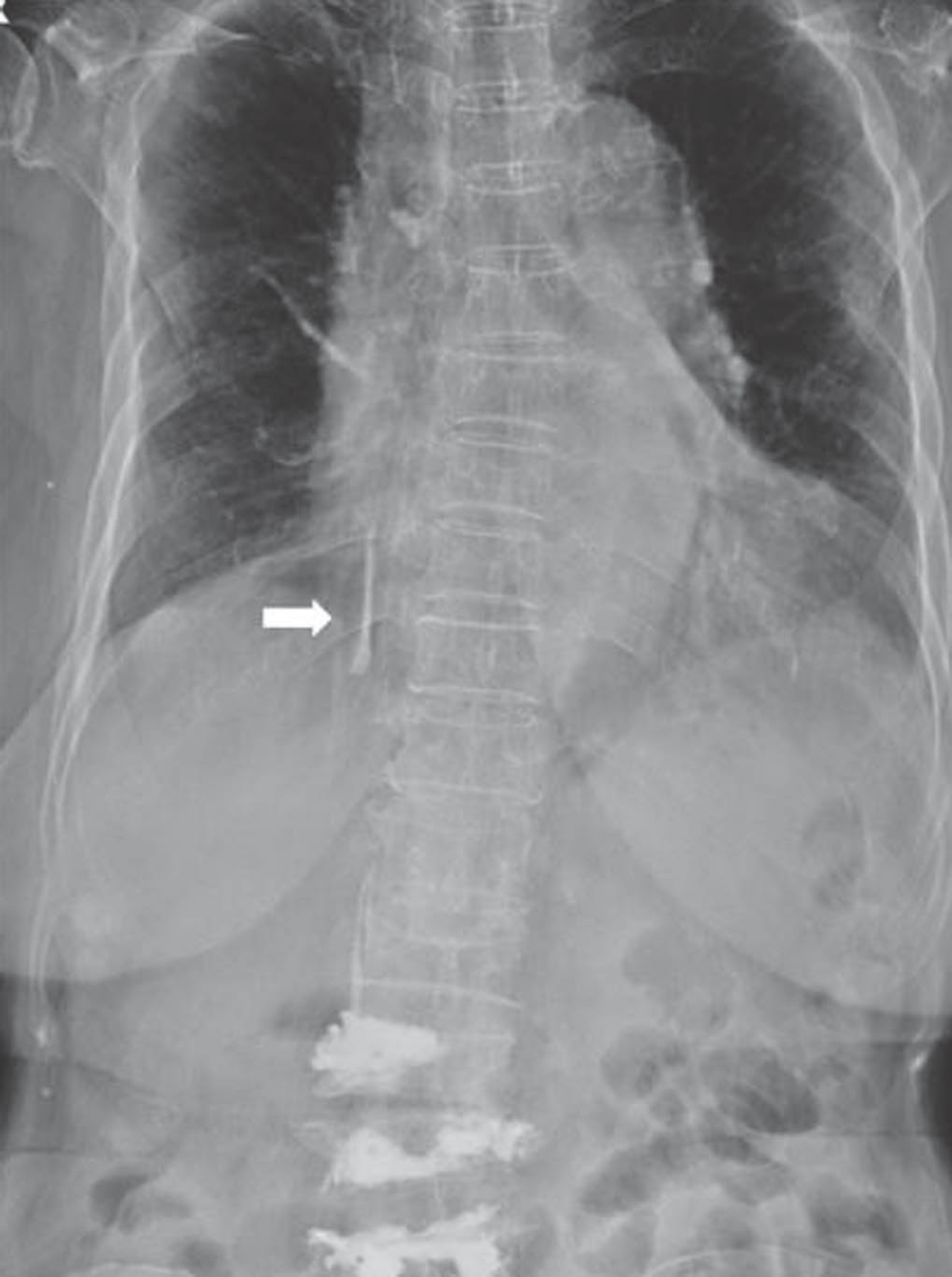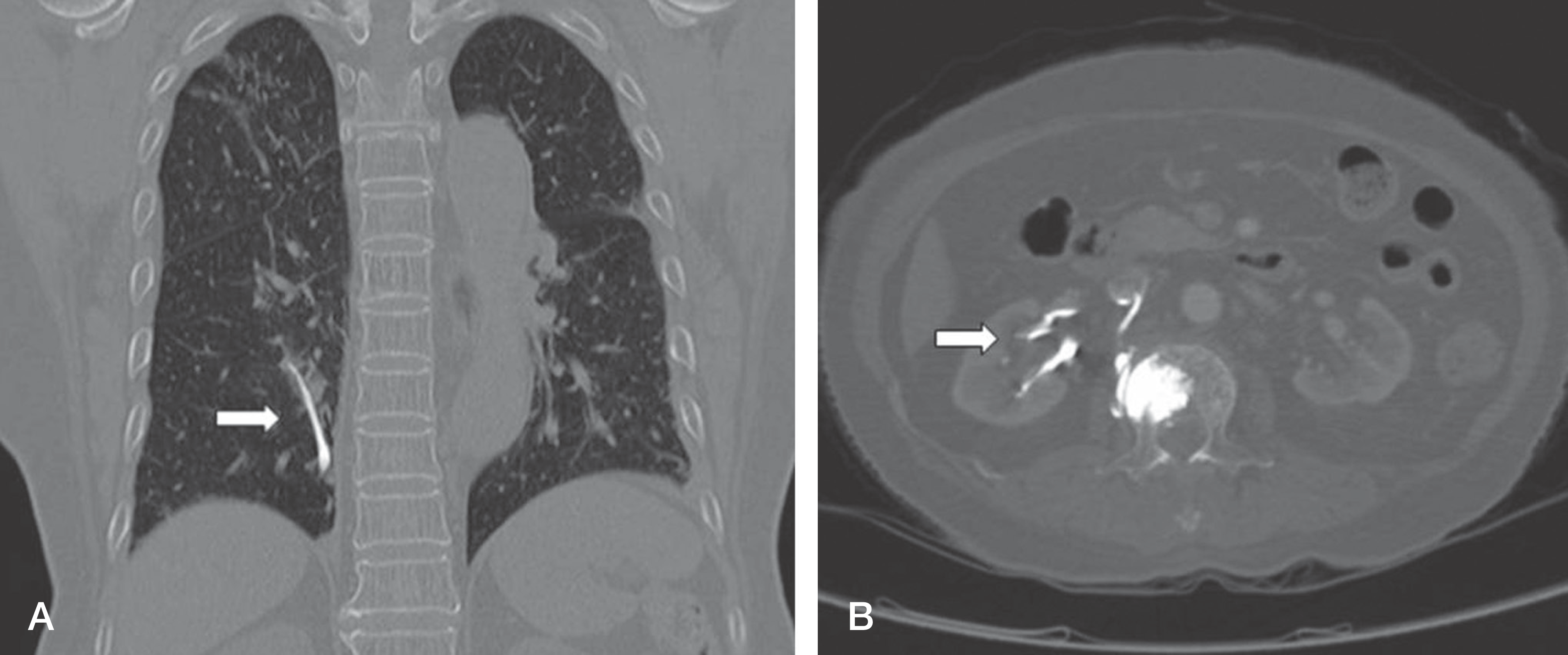Abstract
Objectives
To report a case of simultaneous pulmonary and renal embolisms after balloon kyphoplasty and review relevant literature.
Summary of Literature Review
Pulmonary or renal embolism caused by cement leakage during balloon kyphoplasty is a rare complication but can be fatal.
Materials and Methods
An 84-year-old female patient was treated with balloon kyphoplasty for an osteoporotic compression fracture. Pulmonary and renal embolisms were detected after the procedure and the patient was treated conservatively.
REFERENCES
1. Amar AP, Larsen DW, Esnaashari N, et al. Percutaneous transpedicular polymethylmethacrylate vertebroplasty for the treatment of spinal compression fractures. Neurosurgery. 2001; 49:1105–14.

2. Deramond H, Depriester C, Galibert P, et al. Percutaneous vertebroplasty with polymethylmethacrylate: technique, in-dications, and results. Radiol Clin North Am. 1998; 36:533–46.
3. Radcliff KE1, Reitman CA, Delasotta LA, et al. Pulmonary cement embolization after kyphoplasty: a case report and review of the literature. Spine J. 2010; 10:E1–5.

4. Yoo KY, Jeong SW, Yoon W, et al. Acute respiratory distress syndrome associated with pulmonary cement embolism following percutaneous vertebroplasty with polymethylmethacrylate. Spine (Phila Pa 1976). 2004; 29:E294–7.

5. Hulme PA, Krebs J, Ferguson SJ, et al. Vertebroplasty and kyphoplasty: a systematic review of 69 clinical studies. Spine (Phila Pa 1976). 2006; 31:1983–2001.

6. Eck JC, Nachtigall D, Humphreys SC, et al. Comparison of vertebroplasty and balloon kyphoplasty for treatment of vertebral compression fractures: a meta-analysis of the literature. Spine J. 2008; 8:488–97.

7. Hiwatashi A, Sidhu R, Lee RK, et al. Kyphoplasty versus vertebroplasty to increase vertebral body height: a cadevaric study. Radiology. 2005; 237:1115–9.
8. Krueger A, Bliemel C, Zettl R, et al. Management of pulmonary cement embolism after percutaneous vertebroplasty and kyphoplasty: a systemic review of the literature. Euro-pean. Eur Spine J. 2009; 18:1257–65.
Fig. 1.
The T1 weighted sagittal magnetic resonance (MR) image of the lumbar spine shows compression fractures at L2, 3 with decreased marrow signal intensity.





 PDF
PDF ePub
ePub Citation
Citation Print
Print





 XML Download
XML Download